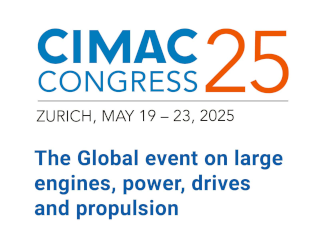Hire rates for container ships on a firm path ahead of Chinese New Year. Scarcity of tonnage in most segments worsening, writes Michael Hollmann
The container ship charter market started out this year the way it closed off last year – on an upbeat note[ds_preview] that seemed to grow stronger and stronger. Charter rate levels survived the festive season largely undented and continued to improve week after week driven by higher-than-last-done fixtures particularly for geared 2,500TEU and 1,700TEU ships, but also for panamaxes and modern very large gearless ships.
By mid-January, rate barometers such as the New ConTex and the Howe Robinson Containership Index were up around 40% and 57% year-on-year, with fixing levels for certain ship types and periods even up over 100% year-on-year. Even though tonnage demand is bound to soften to some extent around Chinese New Year in mid-February, the positive momentum so far surpasses all expectations.
During most years, the period between Christmas/New Year and Chinese New Year is characterized by flagging charter demand until carriers start boosting their fleets again as from early spring/late winter in preparation for the summer peak season. This year, the flow of charter fixtures looks rather strong for this time while tonnage availability is already much reduced following a very chartering period last year.
According to London broker Howe Robinson, the number of spot/prompt vessels dropped to its lowest level (below 30 vessels) since early 2015 just before the charter market rallied on strong extra demand for ships due to labour-related delays in the US West Coast ports at the time. Back in November 2016 oversupply in the charter market had reached its peak at over 290 spot vessels.
Rate levels took quite a step up for modern very large vessels already in the first days of the year on the back of fixing spree by Hapag-Lloyd. The German carrier extended a number of 9,000–11,000 TEU charter ships for its Far East/East Coast South America, Far East/Middle East and transpacific services, pushing levels for ships delivering in spring and early summer to 30,000 $ per day.
According to brokers, similar tonnage was fixed at low 15,000’s $ back in November. The strength of these fixtures took many by surprise given the fact that some 80 container ship newbuildings with slot intakes in excess of 10,000 TEU are expected to be delivered this year (before »slippage«). Concerns have been voiced that the influx might cause overcapacity in the largest sectors, with ripple effects due to cascading of vessels into smaller trades possibly reaching down as far as the panamax sector.
Large ships »undervalued«
For standard large and very large ships of 5,500–6,500 and 8,500TEU the situation has been more stagnant, with latest fixtures concluded at established levels in the low 13,000’s $ or high 12,000’s $. However, as one German chartering broker pointed out: »If activity continues at this level, rates for 8,500TEU ships will soon go up. These ships are undervalued at the moment.«
Conventional panamax tonnage remains in high demand as well driven by service upgrades by the lines. Spot availability was down to just three units worldwide in early January, allowing rates to continue their gradual recovery. Fixing levels were around 8,000$ for panamaxes delivering in Asia and 9,000$ for positions in Europe.
Below 3,000 TEU, market conditions were even firmer, especially for geared 2,500 TEU and geared 1,700 TEU ships. A number of charterers were left unable to cover their requirements. Some standard vessels with higher reefer intakes were able to command rates just short of 10,000$. The 1,700TEU sector saw market rates for standard Wenching type vessels escalating to 9,500 $ in the Mediterranean / over 9,000 $ in Asia.
In the 1,000–1,200TEU class and the smallest feeder sectors, oversupply of tonnage has been significantly reduced. In terms of rates, the picture looks very patchy across the globe, though.
Michael Hollmann















